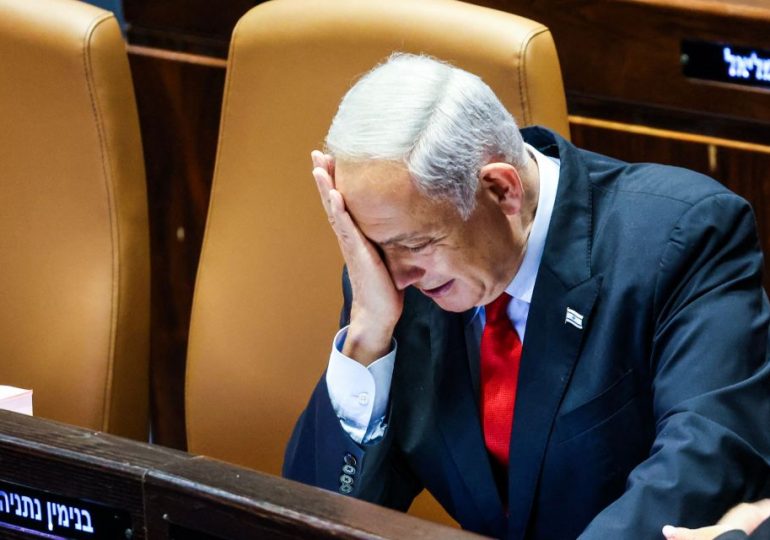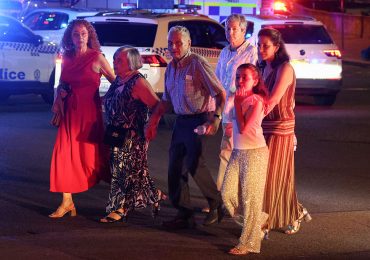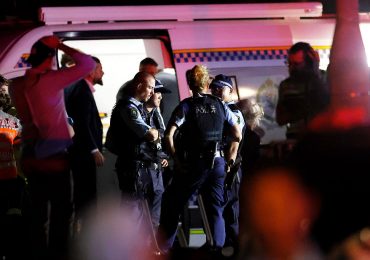ISRAELI PM Benjamin Netanyahu faces a wave of mutiny in his ranks as senior ministers demand a fresh invasion of Gaza after the withdrawal of IDF troops.
Six months into Israel’s war with Hamas, Netanyahu is facing threats from all sides as his people rise up in protest and government officials challenge him.
AFPNetanyahu is facing criticism from his people and mutiny within his government ranks[/caption]
Yesterday marked six months since Hamas’ October 7 massacre which sparked war between Israel and Hamas
GettyIsraeli protestors light a fire in Tel Aviv on Saturday[/caption]
AFPRight-wing cabinet ministers Ben-Gvir (L) and Bezalel Smotrich both raged at Netanyahu after IDF troops withdrew from southern Gaza[/caption]
Yesterday, exactly six months after horrific Hamas massacre of 1,200 Israelis on October 7, the IDF almost completely withdrew from southern Gaza.
The unexpected move is reportedly linked to a possible ceasefire deal – demanded by tens of thousands of Israelis who took to the streets on the weekend in protest.
But Israel’s national security minister Ben-Gvir slammed the decision, calling on Netanyahu to begin a fresh ground assault in Rafah where over 1.4million Palestinians are sheltering.
He suggested Netanyahu would not be able to continue as PM after the decision.
Fellow right-wing finance minister Bezalel Smotrich said the decision hurts Israel’s chances at victory.
Ben-Gvir raged on X: “If the prime minister decides to end the war without a large-scale offensive in Rafah to defeat Hamas, he will not have a mandate to continue serving as prime minister.”
Smotrich said: “The only forum authorised to make significant decisions is the full [Security] Cabinet, but unfortunately this is not how things are happening.
“We are seeing decisions being made in the smaller [War] Cabinet without approval…[and] under international pressure that is harming the war’s momentum and our interests.”
Israel’s PM is apparently “desperate” for a ceasefire deal and for the chance to see Hamas’ hostages safely freed.
A source told Sky that the death of six foreign aid workers and their Palestinian driver in Gaza last week “changed everything” ahead of the IDF withdrawal.
But defence minister Yoav Gallant said the troops were pulled out in preparation for future missions – including one in Rafah.
On October 7 Hamas terrorists tore through villages, sexually assaulted women, and dragged innocent Israelis back to the Gaza Strip where around 130 still remain.
Israeli civilians took to the streets in Jerusalem on the weekend to demand their release and to pressure the government to reach another ceasefire deal.
Some focused on a-political messages of grief about the hostages, while others chanted more forcefully about their government’s choices.
One woman, Michal Nachshon, protested right outside Israel’s government HQ on Sunday.
She told Reuters: “Their families and everybody here has had enough. And people need to understand that and the world needs to stand up and get them back.”
Today ceasefire negotiations were held in Cairo, where both Hamas and Israel reportedly made concessions.
But an IDF spokesperson told Sky News that he is “cautious” about any reports of progress and said there is currently no deal on the table.
A Hamas official also told Reuters there had been no developments.
Netanyahu’s decisions since the war broke out have faced international criticism, most recently from his biggest ally in the US as Biden pressures him to push a ceasefire deal.
Israel has almost completely destroyed the Gaza Strip in an effort to eradicate Hamas.
The UN reports that over 30,000 Palestinians have been killed in six months including more children than in four years of worldwide conflict.
For those who are still alive and crammed into the borderland of Rafah in the south, malnutrition is rife and famine is a fast-approaching fear.
The instability in Tel Aviv’s cabinet comes after Iran vowed to strike Israel in retaliation for the hit on its consulate in Syria, which killed a top general.
ISNA, Iran’s semi-official news agency, put out a terrifying graphic showing nine different types of Iranian missiles capable of reaching Israel.
The airstrike, widely blamed on Israel, saw two senior military commanders killed alongside five other officers.
GettyCountless Israeli civilians took to the streets in Israel’s capital to demand the return of the hostages[/caption]
GettyThe Gaza Strip has been all but destroyed after six months of war[/caption]
Leave a comment








